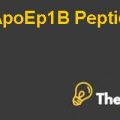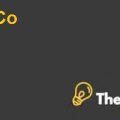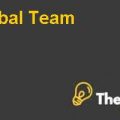
Information Resource Management at Hydro-Québec
Case analysis
Introduction:
Hydro-Quebec is a public utility company owned by government was founded in 1944. The company is engaged in producing, transmitting and distributing hydroelectricity. The operations of the company are based in the United States and Canada as well. The company is known to be the largest manufacturer and distributor of energy in terms of electricity in various part of the world. Till 1997, the company had enjoyed a monopoly as it was the sole supplier of hydro-energy in Quebec. After that, the U.S electricity market deregulated, Quebec was no longer the sole supplier of electricity. In order to make business more efficient, the company has divided its company into various business units named as Production, TransEnergie, Distribution, Equipment, Petrole et Gaz and Technologie et Development Industriel.
Current analysis:
After the end of monopoly that has been enjoyed by the company for years, deregulation in the United States ended the era of charging competitive pricing by Quebec and the competition has been intensified. Currently, the company has divided the organization into six major divisions to compete with the market. That was the major shift in company organizational structure and that in turn lead towards making various changes in the organization internally. In addition to that, a new management model named as Customer Information Systems has been implemented to bring efficiency and better performance in the company.
Challenges faced by Ghislaine Larocque:
Ghislaine Larocque has been appointed as the vice president of head HQD Sales and Customer Service. After her appointment, the main area of concern that she found was related to the direction and strategy for the information system in Hydro-Quebec. She asked her employees about the future of information system and the strategy to follow. Unfortunately, the employees of the company were unable to answer that question. Despite the fact that the company is spending more than $50 million on more than 200 IT systems, the company had no clear strategy. In addition to that, the company had failed to make the overall plan for its systems. Along with that, the company has done with the establishment of the six independent divisions that has entirely transformed the outlook of the organization. The transformation has created numerous challenges in terms of managing all the divisions on a separate basis. Furthermore, the first finding of the planning exercise was that the company’s legacy systems, most of which dated back to the late 1970s, required urgent updating. Those systems were first developed responding to the needs of a business context entirely unlike the one at the turn of the millennium.
Assuming you are Yves Legris, Head of the Customer Information System (CIS) project, define the Project Charter for the e-commence and Customer Information System project.
Project Charter:
| Project Name/Number: | Prepared by: | Date: |
| Customer Information System Project. | Yves Legris | January 3rd, 2006 |
| Customer/End User Group: | Contact Name: | Project Type (S/M/L): |
| Employees of Hydro-Quebec | Yves Legris | Large |
| Business Unit: | Project Manager: | Project Sponsor: |
| Distribution | Yves Legris | None |
Project Information:
| Project Manager’s Responsibility and Authority |
| His duties included overall project management and, more specifically, financial management as well as management of the social-political aspects of the project, meaning the relationship with the rest of Hydro-Québec, its board and the outside suppliers involved in the project. |
| Other Project Stakeholders |
|
| Stakeholders’ Responsibilities |
|
Project Scope Statement
| Business Background
Hydro-Québec produces, transmits and distributes hydroelectricity. It also carries out innovative research in the field. Its aim is to become a world leader in energy. Hydro-Québec operates Canada’s largest electricity generation, transmission and distribution network and is one of the largest electricity producers in North America. |
| Business Need
The business is engaged in providing hydroelectricity to nearly more than 3.5 million customers across the world. There is a high need for this business as it is the most efficient and feasible source of producing electricity. |
| Technical Approach to Meeting Business Need (Identify alternatives if appropriate) |
|
Question 2
Conduct a stakeholder analysis of ...................
This is just a sample partial case solution. Please place the order on the website to order your own originally done case solution.
The case starts with a review of the business environment, which resulted in Hydro-Quebec to adopt a new approach to the management of their information resources. The main external factors are described, as well as their influence on the decision Hydro-Quebec, to create six independent corporate units. This restructuring had the effect of significant changes in the institutional setting of Hydro-Quebec. Dealing mainly describes how the company responded to these external pressures led to serious internal changes, such as creating a global service center and the transfer of responsibility for information resource management divisions. The case illustrates how a major project to computerize Hydro-Quebec Distribution (HQD) activity, a new management model have come and how roles and responsibilities was implemented. Finally, an example discusses the challenges faced by companies in the implementation of new information resources management model. "Hide
on Line Dubé, Carmen Bernier, Vital Roy Source: HEC Montreal Centre for case studies 16 pages. Publication date: 01 Sep, 2007. Prod. #: HEC023-PDF-ENG













